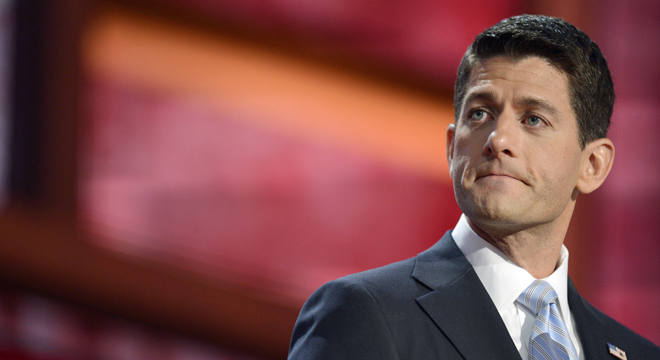Vice Presidential nominee Paul Ryan’s headlining speech at the GOP convention in Tampa Wednesday night touched on many of the election’s defining issues. But it was also filled with prevarications — not just recitations of the conventions “you didn’t build that” theme, but on the very policy matters that have endeared him to the political establishment in Washington.
The speech effectively rallied his supporters in the audience. But on the merits it was chock full of misstatements of fact that undermine his reputation for brave, big ideas — which has hastened his rise through the ranks of the GOP.
Here are the top five examples:
Ryan forged his reputation in large part by drafting and advancing an unpopular plan to dramatically cut and privatize Medicare. Though he didn’t mention that plan once on Wednesday, he included it in his last two budgets, both of which preserved the Affordable Care Acts cuts to Medicare — taken mostly from overpayments to private insurers and hospitals.
Instead, Ryan once again dubiously accused President Obama of being the true threat to Medicare.
“You see, even with all the hidden taxes to pay for the health care takeover, even with new taxes on nearly a million small businesses, the planners in Washington still didn’t have enough money. They needed more. They needed hundreds of billions more. So, they just took it all away from Medicare. Seven hundred and sixteen billion dollars, funneled out of Medicare by President Obama. An obligation we have to our parents and grandparents is being sacrificed, all to pay for a new entitlement we didn’t even ask for. The greatest threat to Medicare is Obamacare, and we’re going to stop it.”
Obama did use those Medicare savings — in the form of targeted cuts in payments to providers, not in benefits to seniors — to pay for the health care law. Ryan’s budget calls for using them to finance tax cuts for wealthy Americans, and deficit reduction. But by now calling to restore that spending commitment to Medicare, Ryan and Romney are pledging to hasten Medicare’s insolvency by many years.
Ryan said the Obama presidency, “began with a perfect Triple-A credit rating for the United States; it ends with a downgraded America.”
Standard & Poors downgraded the country’s sovereign debt rating in 2011 because congressional Republicans, of which Ryan is a key leader, threatened not to increase the country’s borrowing authority — risking a default on the debt — unless Democrats agreed to slash trillions of dollars from domestic social programs and investments. Ryan even briefly toyed with the idea that the country’s creditors would forgive default for “a day or two or three or four” as long as Democrats ultimately agreed to GOP demands.
- Janesville GM Plant
Ryan criticized Obama for — yes — not using government funds to prop up an auto plant in his district.
“A lot of guys I went to high school with worked at that GM plant. Right there at that plant, candidate Obama said: ‘I believe that if our government is there to support you … this plant will be here for another hundred years,'” Ryan recalled. “That’s what he said in 2008. Well, as it turned out, that plant didn’t last another year. It is locked up and empty to this day.”
Ignoring the inconsistency of a Republican chastising Obama for not bailing out more auto manufacturers, the plant in question closed before Obama’s inauguration in 2009.
- Bowles-Simpson Debt Commission
Ryan chastised Obama: “He created a bipartisan debt commission. They came back with an urgent report. He thanked them, sent them on their way, and then did exactly nothing.”
Ryan sat on that commission. He voted against it. Following his lead, so did the panel’s other House Republicans.
- Protecting the Poor
Near the end of his speech, Ryan claimed the campaign’s top priority is protecting the poor. “We have responsibilities, one to another — we do not each face the world alone,” he said. “And the greatest of all responsibilities, is that of the strong to protect the weak.”
Just under two thirds of the dramatic spending cuts in Ryan’s budget target programs that benefit low-income people. That plan also calls for large tax cuts for high-income earners.






